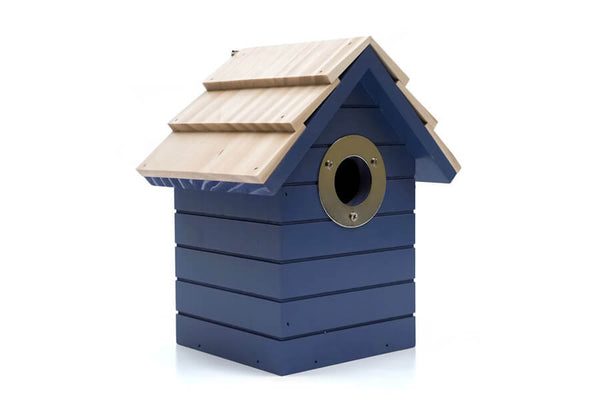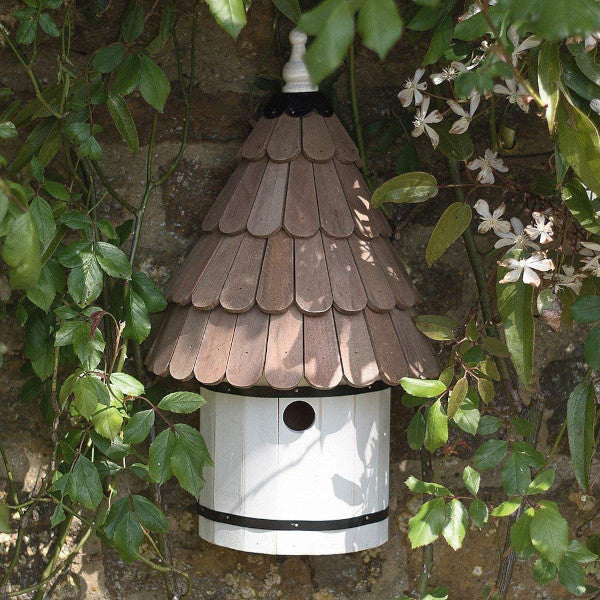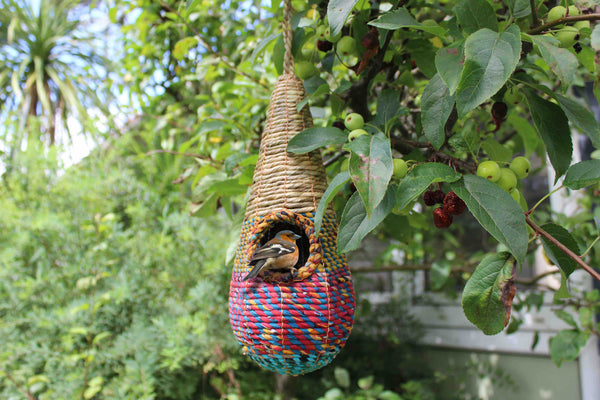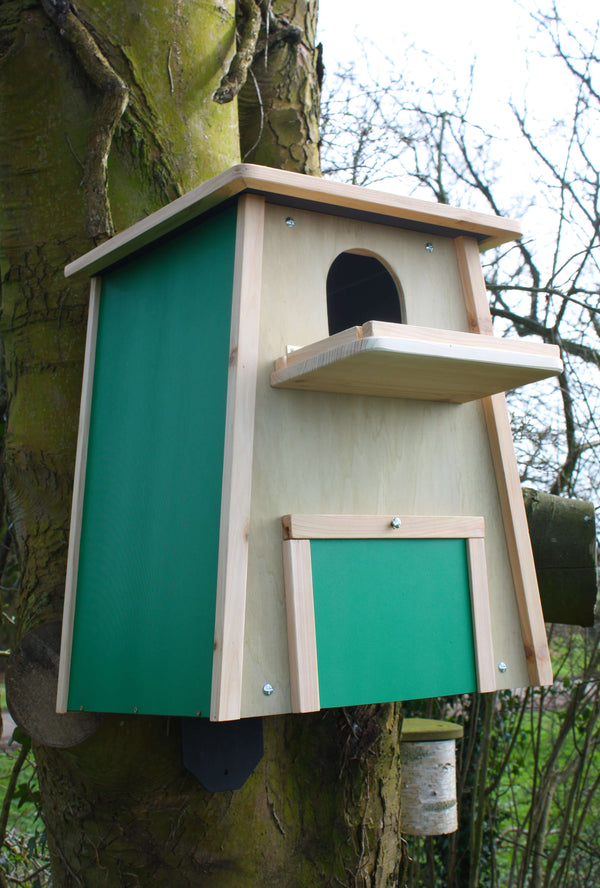When do British birds start nesting?
British garden birds can nest at any number of times since there are so many species that are native to the UK. The answer to the question, though, does have an answer.
In this article, we're going to talk about what time most British birds nest, as well as a few other factors that are important and relevant to the nesting period of British birds. We'll also touch on the impact other wildlife can have on nests and how to best place nest boxes in your garden. So, without waiting for breeding season, let's start talking about British birds.
When do birds start nesting in the UK?
As we said at the top of the page, it's hard to define precisely when a nesting season starts or ends - there are thousands of different species of birds that you'd have to consider.
With that in mind, though, the nesting season of most birds generally starts in February and then continues for a while until August. This is the broad range of when you're likely to see nesting birds, though the vast majority of birds nest within the window of March to July.
A few exceptions
There are some birds, it's worth saying, that start earlier than February, and there are others that nest the whole year-round. These birds, it could be said, are the exceptions that prove the rule.
Why do birds nest early?
There are quite a few reasons why a bird, or a flock, may choose to nest a little earlier or later than usual. For the most part, though, it's due to food. That's the driving factor in the lives of nesting birds, and it's something that they're concerned about at all times.
One of the earliest nesting birds is the crossbill. This bird eats the conifer seeds - it's actually specially adapted thanks to its uniquely shaped beak, that's curved in order to get at the seeds as well as possible.
Conifers produce pine cones and, therefore, seeds in January. This simply means that the crossbill is a bird species that must nest a little earlier to get access to its favourite source of food.

Another great example of these early bird species is the owl. Owls love to eat small mammals, and this is what they feed to their chicks while they're actively nesting birds.
Some birds such as blackbirds find it easier to pull worms and alike out of the soft ground in early Spring which means nesting early is beneficial. Getting a species specific Blackbird nest box can really entice them into your garden too.
Small mammals are most easy to spot when the grass is shortest in the winter. This means that owls are very likely to get up and hunt when they can see their prey. This will allow them to feed their chicks well, and ensure that their family survives.
Climate change
One factor that underpins all of this is climate change.
Nesting birds are changing their habits according to temperature, as the way their bodies and their eggs behave is based on just that.
Since things are a little warmer now than they have ever been, the nesting season is starting a little earlier - as much as thirty days earlier, when compared to the 1960s.

Why do birds nest late?
There aren't as many birds out there that lay their eggs later in the year. This is simply because most birds prefer to get their egg-laying done a little earlier - that way, they can ensure that they'll have chicks soon. There are two types of birds that nest late in the year.
Summer migrants
Summer migrant birds are birds that migrate into the UK for the warmer weather in the summer. Some examples of these species are swifts, swallows, and martins.
These birds tend to nest in May, roughly. The reason they don't nest earlier is simple - they're still on their way from where they head in the winter.
Seed eaters
The other type of bird is a seed eater. These birds lay eggs later, for another quite obvious reason - they simply want to be able to nest when their chosen food is readily available.
At the end of the summer, edging toward the autumn, temperatures start to cool, and plants begin to drop their seeds en masse. While this isn't the case for every single plant species out there, it's the case for a large number of them.
In these cooler temperatures, birds will easily be able to head out and collect seeds for their young, increasing their chances of survival.
When does bird breeding season begin?
Bird breeding season occurs over a long period of time, between February and August.
A general rule of thumb is that birds start to nest at the end of the winter, which is typically mid to late February.
The early bird gets the... seeds?
The earliest of the wild birds to nest in the UK, though, is the Crossbill. This is a bird that mainly lives in Scotland and begins nesting in January when it can get good access to its favourite type of bird seeds.
How does a bird's nesting season affect you?

This is the question that most people care about - will a bird's nesting sites influence the way that you keep your house, garden, and anything else that you might be concerned with.
Well, it's not so much a case of what the nesting season does to you, but what you do to the nesting season.
In the UK, it is a criminal offence to have disturbed actively nesting birds, whether by accident or on purpose. When a bird is nest building, there are a whole host of things that you should really avoid and should continue to avoid until the end of the nesting season. Luckily, we've got a few key ones to steer clear of.
How to help nesting birds
First of all - avoid cutting back trees and hedges. These are vital nesting materials that be used to help the birds build their nests.
This is a bit of a no-brainer, as most tree surgeons of keen amateurs would wait to trim their garden back for the autumn and winter - it's typically best to trim back when the plant isn't growing, and sap isn't flowing.
Not cutting back trees and hedges during nesting season will allow wild birds to live and nest more easily in your space.
Secondly, you must watch out when strimming.
Strimming is something that a lot of gardeners avoid as it can be a little dangerous, and tricky. If you're the type of person that's happy to give it a go, though, make sure you avoid strumming undergrowth and long grass near shrubbery during the nesting season. A number of birds love to nest in those environments.
Thirdly, avoiding construction for the sake of nesting birds is for the best.
This can be tricky since many birds like to nest within man-made structures, but it's vital. Accidentally destroying a nest during building word could be catastrophic for both the birds and you.
You can also look to install a nest box into your garden! Birds such as blue tits, blackbirds, robins and other birds will soon discover the nest box if placed in the right place and could become regular visitors.
It may take a few weeks, months or even years after installation before your feathered friends start using the box, but patience is the key.
Even larger, other birds such as tawny owls and long eared owls will use certain nest boxes but you need to ensure you pick one that is the right size and location. Check out our owl houses to see if there's something that works for your garden.
It's important to ensure that the nests are placed away from potential predators and other wildlife that could affect the nesting birds. General rule of thumb is the higher, the better! Away from things like tops of fences where cats can hide and hunt.
Finally, we come to the most simple tip: avoid areas where you may think there is a nest. If you believe there to be a nest within the fascias of your house, for example, steer clear of it!
If a bird believes that a potential predator is encroaching on its territory, then it's liable to abandon the nest, including any young that may be in it, and fly away to begin the process once more somewhere else.
This would, of course, be disastrous for the survival rate of the young chicks.
How do you tell if birds are nesting?
Well, the easiest way to tell this is to consider what a human is liable to do while they're moving home.
When moving house, you're likely to carry new things into your home that you might like and bring your family to see the new place.
You're also likely to spend a lot of time coming and going from your new home, as you decorate and move furniture to fit in the new place.
Finally, you're likely to bring your kids, if you have them, to the new home. While you might drown them out, your neighbours would certainly notice some brand new kids in the house a few doors down.
These behaviour markers are all the same with birds nesting.
Birds will bring their own furniture and homemaking odds and ends to their nest site, from pieces of fluff and lint to small sticks and twigs.
Also, they will often fly in and out of the nest, ensuring that it is fully set up.
Finally, they'll eventually have a few chicks in the nest that you'll certainly notice. From calling to poking their heads out of the next, you're liable to see them fairly soon after they hatch.
We hope that this article on nesting birds in the UK has been able to inform you a little. We hope that armed with this knowledge, you can go forward and spot some nesting birds near you!










